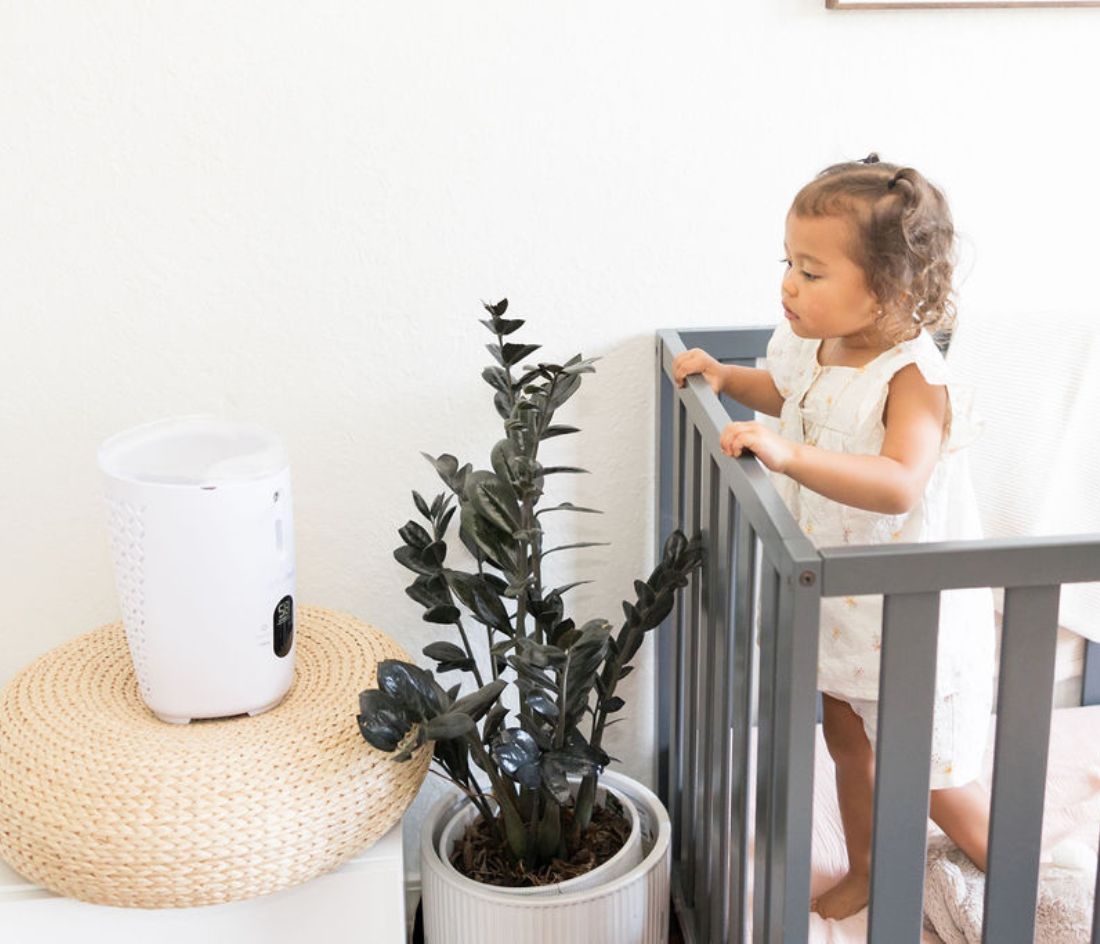Guest Post By Genevieve Kane, MSN, RN
Once a baby reaches a few months old, it can seem that anytime they spike a fever, are cranky, or have a diaper rash, the first question parents are often asked is whether or not they are teething. Regarding diaper rash, there is some truth behind teething contributing to the problem.
What Parents Need to Know About Teething and Diaper Rash
If you’ve noticed your little one experiencing more diaper rashes when teething, here’s what to know about the connection and how to help your baby be more comfortable when a diaper rash happens.

The Connection Between Teething and Diaper Rash
There are multiple types of diaper rashes. Per the American Academy of Pediatrics (AAP), the most common one is an irritant diaper rash.
According to the AAP, this type of diaper rash is also known as irritant dermatitis. With this type of diaper rash, pink and red patches develop underneath the diaper.
One risk factor for developing an irritant diaper rash is teething. The AAP explains that this is due to the extra saliva that accompanies teething. When the extra saliva goes through the GI tract, it can lead to loose stools or diarrhea, causing a diaper rash.
Other Types of Diaper Rash
Many conditions are blamed on teething, including diarrhea and diaper rash. It’s important to be aware of the other types of diaper rash and have a general idea of their appearance. Some require treatment from a medical professional and could be missed if the rash is mistakenly blamed on teething.

Other types of diaper rashes, per the AAP, include:
Yeast infection: This is caused by an overgrowth of yeast and may be more common after a round of antibiotics. Unlike an irritant diaper rash which may not be severe in the folds of your baby’s groin, yeast loves warm, dark places–so groin folds are often impacted.
A yeast infection looks like shiny red or pink patches. There may also be little bumps, and the skin may crack.
Yeast infections typically need treatment with an antifungal. Treatment may be an over-the-counter recommendation from your child’s healthcare provider, or a prescription. If you think your child has a yeast infection, it is essential to reach out to their healthcare provider for advice.
Bacterial Infection: A bacterial diaper rash can vary in appearance based on the bacteria causing it. For example, a staph infection may cause yellow-crusted lesions. Whereas a strep infection can cause bright red skin around the anus.
If you think your baby has a bacterial diaper rash infection, it is important they are seen by a healthcare provider for appropriate treatment.
Allergic Reaction: Various wipes, diapers, and diaper creams have different ingredients. It’s possible one of these ingredients is causing your little one’s rash.
If your baby develops a rash after exposure to a product, consider not using the product for a couple of weeks. If the rash stays away, there’s a decent chance they were allergic to an ingredient.
Rare Forms of Diaper Rash: Rarely other conditions may mimic a diaper rash. For example, pediatric psoriasis may look like a diaper rash.
The bottom line is if your child has a diaper rash that concerns you and seems different from a typical irritant diaper rash, touch base with your child’s healthcare provider.
How to Help Your Child With a Diaper Rash Feel Comfortable
Nemour’s Children’s Health provides several tips for managing a diaper rash. Most of these tips are geared primarily towards an irritant diaper rash, the type of rash you may see during teething. Ways to prevent diaper rash or manage it once it occurs include:
- Ensuring you change your child’s diaper frequently.
- Allow for diaper-free time in between diaper changes when possible.
- Ensure your child’s skin is dry before putting a new diaper on.
- If the skin is wet, patting it dry instead of rubbing it can help.
- Put the diaper on loosely.
- Give your baby’s bottom occasional sitz baths in between diaper changes. Just make sure they’re dry before putting a new diaper on.
- Consider applying diaper cream or ointment to protect their skin between diaper changes.
Following these tips can help prevent diaper rash and keep your little one more comfortable if it does occur.

Key Takeaways
Diaper rashes are part of every parenting journey. And the extra saliva from teething may make your child more susceptible to diaper rashes. However, teething is also a time of exploration, including by mouth and, per the AAP, decreasing maternal antibodies (germ-fighting cells). This can make your child more susceptible to diarrhea causing germs around the same time new teeth are coming in.
Whether your little one’s diaper rash is due to diarrhea from an illness or teething, there are several practical ways to help prevent and treat diaper rash. However, reach out to a healthcare provider if the diaper rash doesn’t go away, gets worse, or you notice sores or cracked and broken skin.
If you enjoyed this article, you will also love:
- How to Tell if Your Baby is sick or Teething
- 8 Natural Cold Remedy Myths Debunked
- How to Spot an Ear Infection in a Baby
- Work From Home Tips For Parents With a Sick Kid
- How to Handle Breastfeeding When Sick
Genevieve Kane, MSN, RN, is a mother of four and a registered nurse with a background in pediatrics. When she's not working, you can find her cooking up tasty family dinners or keeping up with her kids on a hiking trail in her home state of Colorado.
The Nozebot is a battery-powered suction device designed to clear nasal congestion in babies and children.



